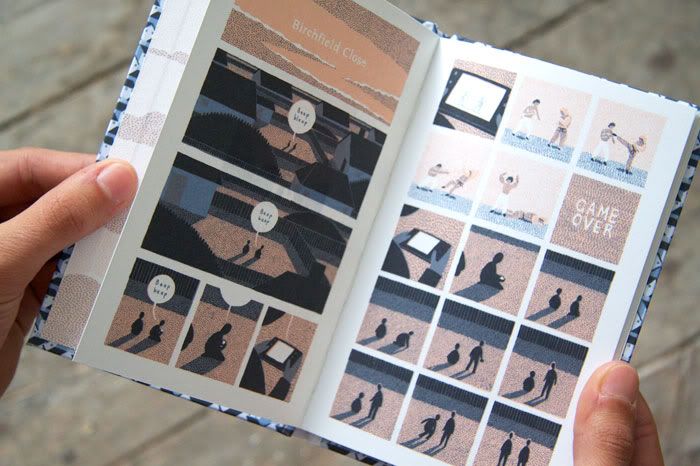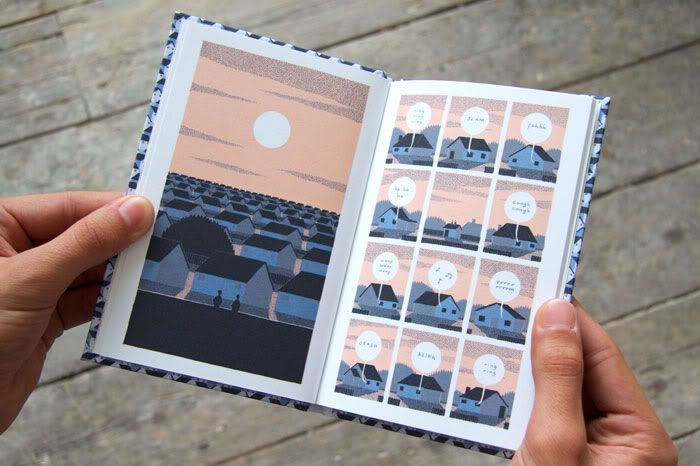
by Jon McNaught
Nobrow Press, 2010. Hardcover, 38 pages.
This is a book of astonishing beauty, pure and simple.
Birchfield Close is one of those not-common-enough books that’s not really about narrative, but about trying to represent sensory experience in comics. To some degree McNaught’s work resembles that of Chris Ware, but evacuated of story.
Two kids sit in a yard in the suburbs at dusk. One plays a portable videogame console which makes repetitive beeping noises. The kids decide to climb up on a roof to watch the neighborhood. We hear all the natural and artificial sounds of the neighborhood through word balloons (though there are no word balloons from the kids or other humans except from a TV). They pretend a stick is a gun. The kid with the console plays video games some more. Then they go home.
McNaught tends to work in a dense grid of tiny panels, showing what happens from instant-to-instant.
His masterful ability to capture the quality of light and shadows at dusk was riveting. I found myself staring at single images for minutes at a time, uncomprehending of how he was able to accomplish such a thing. I was even more shocked when I learned — while writing this — that the book only uses 3 colors! He is also somehow able to represent all the physical textures of life despite the reductive nature of his art style. It’s pure alchemy at work here.
In some respects — since it lacks even sound — comics is the worst medium to attempt to replicate sensory experience and the emotions those experiences evoke. But McNaught is ingenious here: he starts with the repetitive game noises, and by contrast the other noises (though limited to word balloons) become luxurious in their variation. Ironically, Birchfield Close is also very much about silence — something else comics (oddly) rarely explores.
It’s all the more surprising since the book is so little — about the size of a pocket diary. But it depicts an expansive world, full of activity, and when you are reading it, you are fully engrossed in it. Even the quality of the paper it’s printed on — thick, rough, and rich — adds a tactile sensation, adding touch to the experience.
At first I felt the message was clear: the kid is missing the beauty of the world around him because he keeps going back to his videogame. But the more I stared at the book, the more it seemed to me to be an indictment of adult perspectives as well: how we dismiss pre-fabricated cookie-cutter houses as an eyesore of the suburbs. But McNaught illustrates the beauty of the patterns they make, and on one page he reduces them to basic blocky shapes but the variations there are fascinating as well.
It’s an absolute joy of a book, and a rare experience. A little poem-comic of tremendous scope and profundity.
(All images are taken from Nobrow’s website)


KS
————————————————————————————-
Kumar Sivasubramanian is the writer of Weird Crime Theater.
